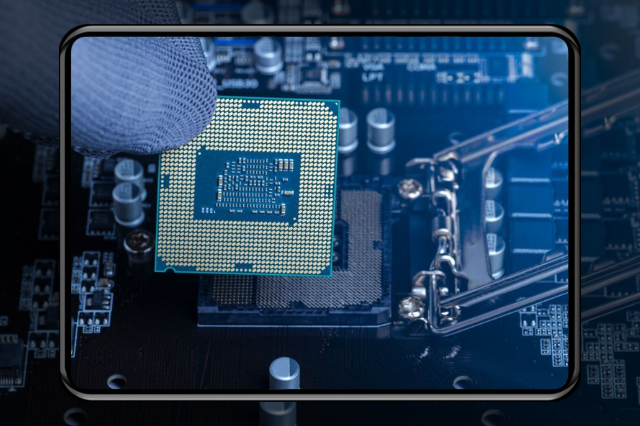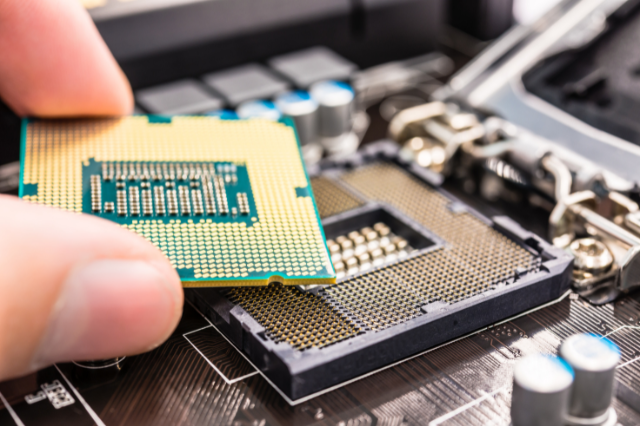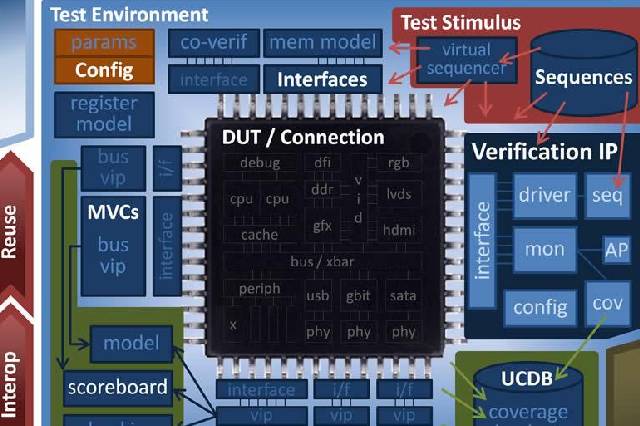
loading...

Learning Outcomes:
Most people would agree that the basis of any civilization or society is language. Electronics professionals also use languages unique to their community, which is akin to its own society. VHDL and Verilog are two of these industry-specific (hardware description) languages. Both are regarded as general-purpose digital design languages, although Each has little distinctions and advantages over the other.
What are the HDLs?
Hardware description languages (HDLs) are used to define or explain the behavioral properties of digital logic circuits. The analysis and simulation of an electronic circuit is made possible by a hardware description language, which permits a precise, formal description of an electronic circuit.
Additionally, it enables the creation of a netlist from an HDL description (a description of the physical electronic components used and how they are connected), that can be arranged and routed to construct the group of masks required to make an integrated circuit.
HDLs are used to build digital circuitry such as computer chips, motherboards, processors, and other types of hardware.
Although there are many HDLs, but VHDL and Verilog are the most widely used. These languages are supported by most CAD tools on the market.
VHDL: History and Applications
VHDL stands for Very High-Speed Integrated Circuit (VHSIC) Hardware Description Language, which is used to describe the behavior of digital circuits or can be used to create or implement hardware for digital circuits or systems. Mixed-signal and digital systems, such ICs (integrated circuits) and FPGA (field-programmable gate arrays), are expressed using VHDL in EDA (electronic design automation).
In the 1980s, the VHSIC (Very High-Speed Integrated Circuit) program was launched by the US DoD (Department of Defence) with the aim to design high-speed ICs. A variety of hardware development firms began creating their own HDL for their ICs. Every company had its own unique HDL. The issue thus arose from the inability of all these various companies to share their code and designs. Eventually, every company sent a designed chip design with a different HDL to DoD. Therefore, it was necessary to standardize hardware description language for the design, documentation, and verification of digital circuits and systems.
In 1985, Under a DoD contract, IBM, TEXAS INST., and Intermatrix developed the initial version of VHDL 7.2. Which later in 1987, was standardized by IEEE with IEEE 1076 standard. After some modification, VHDL received the new standard IEEE 1164 in 1993, which is now widely used.
Several child standards were introduced in addition to IEEE standard 1164 to increase the language's capability. Better handling of real and complex data types has been added in IEEE standard 1076.2. To simplify arithmetic operations on vectors, IEEE standard 1076.3 introduced signed and unsigned types.
The next revision of the standard, known as VHDL-2006, was accepted in June 2006 by Accellera's VHDL Technical Committee, which was compatible with the previous versions of VHDL. Then VHDL-2008 came up to address more than 90 problems that were found during the VHDL-2006 trial period and added improved generic types.
Key Benefits of VHDL
Limitations of VHDL
Due to the capabilities of addressing the VHDL limitations, Verilog is popularly used by most industry experts.
Verilog: History and Applications
Verilog was initially started by Gateway Design Automation Inc. around 1984. It took till 1990 for Verilog to be a standardized language. The First Verilog simulator came up in 1985. It added up XL Algorithm as a result it was a very efficient method for gate-level simulation.
Around the late 1990s, Cadence purchased Gateway Design Automation Inc. and became the possessor of the Verilog language and simulator. Synopsys at the same time was marketing design methodology using Verilog. Same time Cadence understood Verilog needed to be opened in the market for it to evolve. So, it created Open Verilog International (OVI). This opened the language. OVI soon became vendor independent. But most organizations working with Verilog wanted to customize it. Therefore in 1994, IEEE 1364 working group was formed to convert OVI into an IEEE standard.
Soon after going into the 1990s many companies began working on Verilog simulators. VCS most popular, Verilog compiled simulator from Chronologic Simulation, its compile time was substantial, but simulation execution was faster.
The IEEE 1364 working committee in 1993 onwards further standardized Verilog. This now contained the language and came to be known as IEEE std. 1364-1995. In the subsequent years, many features got added and were successful in solving many problems. In 2001 the new version of Verilog came up to be known as IEEE std 1364-2001.
Benefits of Verilog
Limitations of Verilog
Comparison of VHDL with Verilog
|
VHDL |
Verilog |
|
Easier to understand |
Uses Less code |
|
Natural language |
Hardware modeling language |
|
Strongly Typed Language |
Weakly Typed Language |
|
Not C Language syntax |
Structured like C Language |
|
Difficult to learn |
Easier to Learn. |
|
Variables described by data type |
Programming level construct |
|
Mostly used for FPGA Implementation |
a deeper understanding of hardware modelling |
Conclusion
In this article, a brief discussion of the hardware description languages and their functional difference is presented. VHDL and Verilog are the two popular HDLs used for the modeling of digital designs. Our discussion was centered around both languages' history, evolution, benefits, and limitations. There are no major differences between VHDL and Verilog observed. In conclusion, there are many different viewpoints regarding the superiority of one language over another, but ultimately, it just boils down to personal preference.
 Verilog Essentials: Mastering the Fundamentals of Hardware Description Language
Verilog Essentials: Mastering the Fundamentals of Hardware Description Language
 Unleashing the Power of System Verilog: A Comprehensive Guide for Aspiring Designers
Unleashing the Power of System Verilog: A Comprehensive Guide for Aspiring Designers
 Demystifying VLSI ch Design: Exploring the Core Concepts of VLSI Courses
Demystifying VLSI ch Design: Exploring the Core Concepts of VLSI Courses
 Basics of VLSI - An Ultimate Guide
Basics of VLSI - An Ultimate Guide
 Career Prospects After Completing A VLSI Course
Career Prospects After Completing A VLSI Course
 Top 5 Reasons To Take Up A Professional VLSI Course
Top 5 Reasons To Take Up A Professional VLSI Course
 Mastering VLSI Design: A Comprehensive Guide To Understanding Complex Integrated Circuits
Mastering VLSI Design: A Comprehensive Guide To Understanding Complex Integrated Circuits
 Future-Proof Your Career With A VLSI Course: How Learning About Integrated Circuits Can Boost Your Job Prospects?
Future-Proof Your Career With A VLSI Course: How Learning About Integrated Circuits Can Boost Your Job Prospects?
 System Verilog: An Overview
System Verilog: An Overview
 Introduction to Hardware Description Language (HDL)
Introduction to Hardware Description Language (HDL)
 Unlock The Potential Of VLSI Design With An Integrated VLSI Course Online
Unlock The Potential Of VLSI Design With An Integrated VLSI Course Online
 Universal Verification Methodology:An Efficient Verification Approach
Universal Verification Methodology:An Efficient Verification Approach
 How to Write a Verilog Module for Design and Testbench
How to Write a Verilog Module for Design and Testbench
 What Are the Different Career Paths in the VLSI Industry?
What Are the Different Career Paths in the VLSI Industry?
 Skills required to establish a successful career in VLSI
Skills required to establish a successful career in VLSI Looking for online VLSI courses? Futurewiz can fulfill your upskilling needs!
Looking for online VLSI courses? Futurewiz can fulfill your upskilling needs! The Future Of VLSI- Get All The Latest Insights!
The Future Of VLSI- Get All The Latest Insights! Super 50 Program For Advanced VLSI Design Training
Super 50 Program For Advanced VLSI Design Training Steps to Build Career in VLSI
Steps to Build Career in VLSI Similarities between C and Verilog
Similarities between C and Verilog What is UVM - A High-level overview
What is UVM - A High-level overview



